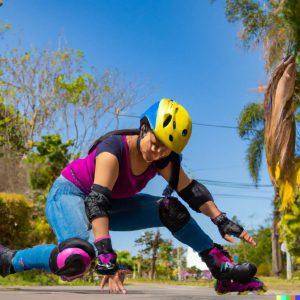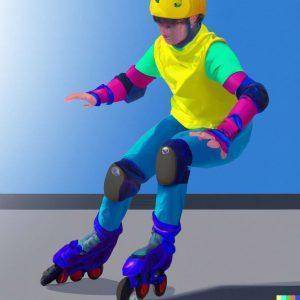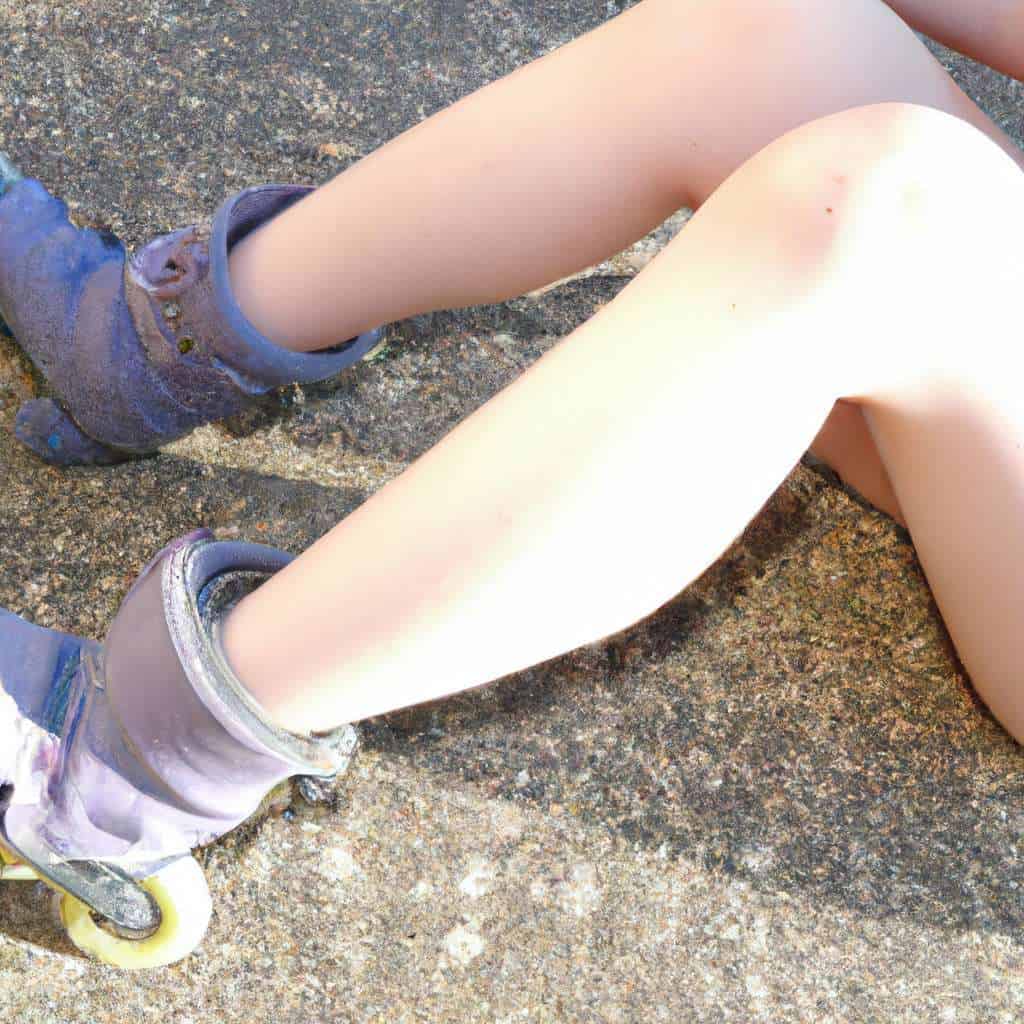Table of Contents
As a roller skater, I know how important it is to wear proper protective gear, especially knee pads. Roller skating involves a lot of movement and balance, and falls are inevitable. That’s why knee pads are important in protecting your knees from injuries and bruises.
There are various types of knee pads available in the market, ranging from basic foam pads to heavy-duty knee pads with hard-shell protection.
It’s essential to choose the right knee pads that fit your skating style and level of experience. Knee pads that are too loose or too tight can hinder your movement and make skating uncomfortable.
Investing in high-quality knee pads is a smart decision for any roller skater. Not only do they protect your knees from injuries, but they also give you the confidence to try new tricks and moves.
In this article, I will provide an overview of the best roller skating knee pads available in the market, their features, and how to choose the right knee pads for your skating needs.
Apusale Bike Skateboard Helmet, Adjustable and Multi-sport for Skate Scooter, 3 Sizes for Adult Youth Kids Toddler
(as of 07/25/2024 14:17 GMT +01:00 - More infoProduct prices and availability are accurate as of the date/time indicated and are subject to change. Any price and availability information displayed on [relevant Amazon Site(s), as applicable] at the time of purchase will apply to the purchase of this product.)Why You Need Roller Skating Knee Pads
As someone who has been roller skating for years, I can attest to the importance of wearing knee pads. In this section, I will explain why you need roller-skating knee pads and provide some tips on how to choose the right ones.
Protect Your Knees from Injury
Roller skating can be a lot of fun, but it can also be dangerous. Falling is a part of the learning process, but it can also result in serious injuries, especially if you land on your knees.
Knee pads provide a layer of protection between your knees and the ground, reducing the risk of injury.
When choosing knee pads, look for ones with a hard plastic shell that can absorb impact. Soft foam padding is not enough to protect your knees from a hard fall.
Make sure the knee pads fit snug and do not slide around when you move.
Avoiding Painful Bruises and Scrapes
Even if you don’t fall, roller skating can still take a toll on your knees. The constant friction between your

knees and the ground can cause painful bruises and scrapes. Knee pads can help prevent these injuries by providing a barrier between your skin and the ground.
When choosing knee pads, look for ones with a durable outer layer that can withstand repeated contact with the ground.
Some knee pads have a reinforced area around the knee cap for added protection. Make sure the knee pads are comfortable and do not chafe your skin.
In summary, roller skating knee pads are essential for protecting your knees from injury and avoiding painful bruises and scrapes.
When choosing knee pads, look for ones with a hard plastic shell and a durable outer layer that fit snugly and do not chafe your skin.
KAMUGO Kids Adjustable Helmet, Suitable for Toddler Kids Ages 2-14 Boys Girls, Multi-Sport Safety Cycling Skating Scooter Helmet
(as of 07/25/2024 14:17 GMT +01:00 - More infoProduct prices and availability are accurate as of the date/time indicated and are subject to change. Any price and availability information displayed on [relevant Amazon Site(s), as applicable] at the time of purchase will apply to the purchase of this product.)Types of Roller Skating Knee Pads
As someone who has been roller skating for years, I know that knee pads are essential for safety. There are three main types of knee pads that are commonly used in roller skating: hard-shell pads, soft-shell pads, and sleeve-style pads.

Hard-shell Pads
Hard-shell knee pads are typically made of a plastic shell that covers the knee area and is attached to a fabric sleeve that goes over the leg.
The plastic shell provides excellent protection against hard impacts and falls. These types of pads are often used by skaters who do aggressive skating or roller derby.
Soft-shell Pads
Soft-shell knee pads are made of foam padding that is covered in a soft fabric. These types of pads are more flexible than hard-shell pads, which makes them more comfortable to wear.
However, they do not provide as much protection against hard impacts as hard-shell pads do. Soft-shell pads are often used by skaters who do recreational skating.
Sleeve-style Pads
Sleeve-style knee pads are made of a stretchy fabric that fits snugly over the knee. They often have foam padding on the inside for added protection.
These types of pads are more lightweight and comfortable than hard-shell and soft-shell pads. Sleeve-style pads are often used by skaters who do freestyle skating or dance skating.
In conclusion, there are three main types of roller skating knee pads: hard-shell pads, soft-shell pads, and sleeve-style pads.
Each type of pad has its own advantages and disadvantages, so it’s important to choose the right one based on your skating style and needs.
SULIFEEL Kids Adjustable Quad Roller Skates,Toddler Beginner Roller Skates for Girls and Boys Age 2-5 Years Old
(as of 07/25/2024 14:17 GMT +01:00 - More infoProduct prices and availability are accurate as of the date/time indicated and are subject to change. Any price and availability information displayed on [relevant Amazon Site(s), as applicable] at the time of purchase will apply to the purchase of this product.)How to Choose the Right Roller Skating Knee Pads
When it comes to roller skating, safety is key. Wearing proper protective gear, such as knee pads, can help prevent injuries and keep you safe while enjoying the sport.
Here are some tips on how to choose the right roller-skating knee pads:
Consider the Type of Skating You Do
The type of skating you do will determine the level of protection you need. If you are a beginner or casual skater, foam knee pads may be sufficient.
For aggressive skating, hard-shell roller skating knee pads are recommended. If you are a speed skater, look for knee pads that are lightweight and have good ventilation.
Look for Good Fit and Comfort
Knee pads that fit well and are comfortable to wear will encourage you to wear them more often. Look for knee pads that have adjustable straps and are made from breathable materials.
Make sure the knee pads are snug but not too tight, and that they do not restrict your movement.
Check the Durability and Quality of the Pads
Durability and quality are important factors to consider when choosing roller skating knee pads. Look for knee pads that are made from high-quality materials and have reinforced stitching.
Check the padding to make sure it is thick enough to provide adequate protection.
When choosing roller skating knee pads, it is important to find a balance between protection, comfort, and durability.
By considering the type of skating you do, looking for good fit and comfort, and checking the durability and quality of the pads, you can find the right knee pads to keep you safe while enjoying the sport.
JBM Adult & Kids Knee Pads Elbow Pads and Wrist Guards Set for Inline Skating, Roller Skating, Skateboarding and Multi-Sports
(as of 07/25/2024 14:17 GMT +01:00 - More infoProduct prices and availability are accurate as of the date/time indicated and are subject to change. Any price and availability information displayed on [relevant Amazon Site(s), as applicable] at the time of purchase will apply to the purchase of this product.)How to Wear Roller Skating Knee Pads Properly
When it comes to roller skating, knee pads are an essential piece of protective gear. They can help prevent serious injuries and enable you to enjoy the sport safely.
However, wearing knee pads improperly can limit their effectiveness and leave you vulnerable to injuries. Here are some tips on how to wear roller skating knee pads properly.
Positioning the Pads Correctly
The first step in wearing knee pads correctly is to position them properly. To do this, place the pad over your knee and ensure that it covers your kneecap.
The top of the pad should be just above your kneecap, and the bottom of the pad should be just below it. Make sure that the pad is centred over your knee and doesn’t slide to the side.
You also need to ensure that the pads are properly aligned with your legs. The pads should be parallel to your legs and not twisted or turned. This will ensure that they provide maximum protection when you fall.
Securing the Pads Tightly
The second step in wearing knee pads correctly is to secure them tightly. The pads should fit snugly around your knee without being too tight or too loose.
If the pads are too loose, they can slide down your leg when you fall, leaving your knee exposed. If they are too tight, they can restrict your movement and cause discomfort.
Most knee pads come with straps that allow you to adjust the fit. Make sure that you adjust the straps so that the pads fit snugly around your knee. The straps should be tight enough to hold the pads in place but not so tight that they cut off circulation.
In conclusion, wearing roller skating knee pads properly is essential for your safety. By positioning the pads correctly and securing them tightly, you can ensure that they provide maximum protection when you fall.
Remember to adjust your pads regularly to ensure that they continue to fit properly and provide adequate protection.
Conclusion
In conclusion, when it comes to roller skating, knee pads are an essential piece of equipment that can help protect you from injuries. After researching and reviewing various knee pads available on the market, I have come to the following conclusions:
- The best knee pads for roller skating are those that fit well, provide adequate protection, and are comfortable to wear for extended periods.
- Hard-shell knee pads are recommended for aggressive skating, while foam knee pads may be sufficient for beginners or casual skaters.
- The Triple 8 KP 22 Heavy-duty Knee Pads are the top pick for overall best knee pads for roller skating, offering excellent protection and comfort.
- For toddlers, the Simply Kids Pads are the best knee and elbow pads available, while the 187 Killer Pads Pro Knee Pads are the best choice for heavy-duty skating.
- The G-Form X2 Pro Knee Pads are the best option for full coverage, and the Bodyprox Protective Knee Pads are recommended for speed skating.
- It’s important to choose knee pads that are appropriate for your skating style and venue, as different styles require varied levels of protection.
Overall, investing in a quality pair of knee pads is a wise decision for anyone who wants to enjoy roller skating safely. By choosing the right knee pads, you can prevent injuries and skate with confidence.






